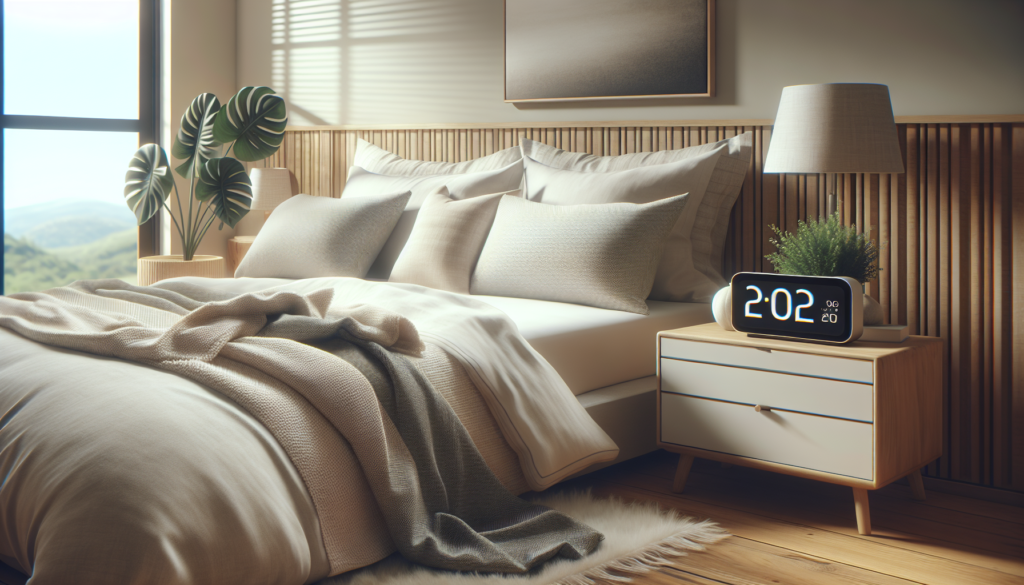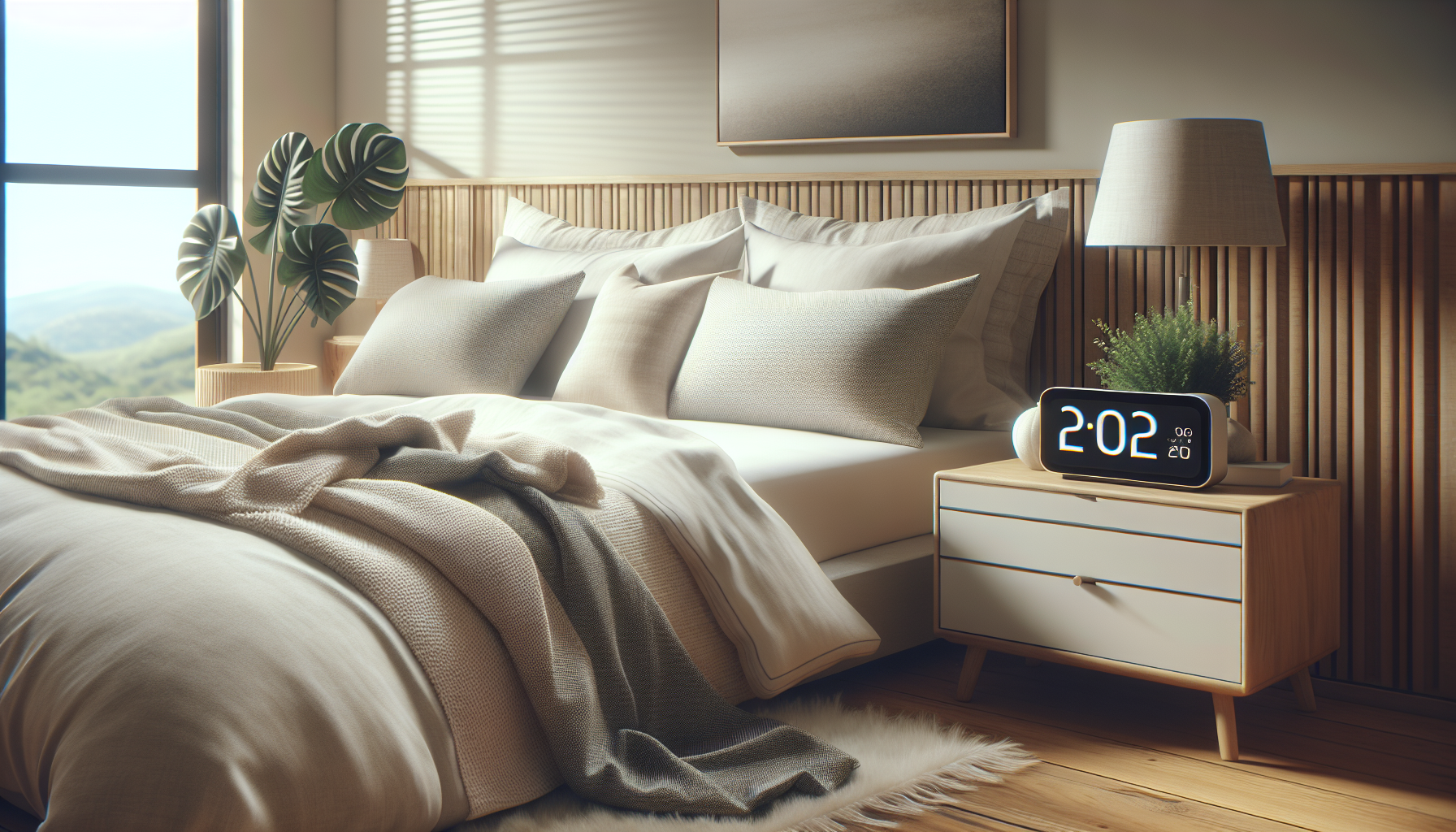Have you ever found yourself staring at your screen, your brain as blank as a new piece of printer paper, while you contemplate the existential dread of another sleepless night? Well, look no further than a power tool more potent than a cup of strong espresso: the mighty nap! That’s right, napping isn’t just for sleepy toddlers and retirees with a penchant for polyester slacks. It’s a strategic power move for anyone looking to turn their groggy existence into something with vigor and pep.
So, straighten up that desk chair, or maybe tilt it back if you’re reading this reclining in preparation for a nap. Let’s discuss the intricacies of maximizing your recovery with a fantastic little thing called strategic napping.

Why Nap?
Before jumping on the napping bandwagon, you might wonder why one should nap. Isn’t that the domain of disgruntled teenagers belatedly doing their homework? Sure. But if CEOs, astronauts, and athletes swear by it, maybe they’ve got a point.
Napping can boost alertness, improve mood, and enhance performance. Imagine that: snooze for a bit and suddenly you’re a happier, sharper, more capable version of yourself. It’s like an app update for your brain, but with less annoying notifications and more daydreaming.
The Science Behind Napping
To understand the magic of napping, let’s break it down into bite-sized pieces not unlike a fine artisan cracker. The act triggers a unique process in your brain, and contrary to our day-to-day consciousness, it’s anything but mundane.
Sleep Stages
Your brain doesn’t just drift off into oblivion when you nap. It journeys through different sleep stages, and each stage is like a cozy little stop on the way to rest-town.
-
Stage 1: Light Sleep
Here, your body begins to relax. It’s like a soft opening for a Broadway show. -
Stage 2: Slightly Deeper Sleep
Heart rate slows, and you may find it harder to remember that embarrassing typo in the email you just sent. -
Stages 3 & 4: Deep Sleep
This is when your body goes into full-on repair mode. It’s the Netflix binge you didn’t know your cells were craving. -
REM Sleep
Welcome to the dream factory! Here, your brain is both creatively chaotic and restorative.
Naps mostly hover around the first two stages, giving you the alertness of a meerkat post-espresso—the most rejuvenating kind of alertness.
The Benefits: Nap Your Way to Greatness
Maximizing recovery through strategic napping isn’t a theory crafted by university students dodging responsibility. It comes with a stack of actual benefits, backed by tons of research and some delightful anecdotes from nap enthusiasts.
-
Enhanced Cognitive Function
Regular short naps enhance cognitive performance, allowing you to spew fun facts at cocktail parties or finally crack the cryptic crossword. -
Improved Mood
Consider it nature’s mood booster. A good nap can turn a grumpy Eeyore into a bouncy Tigger. -
Increased Alertness and Performance
A nap refreshes your brain as if it’s casually rebooting, making it easier to remember where you left your keys or why you walked into a room. -
Boosted Creativity
Many great artists and thinkers were known nap lovers—catch a snooze, capture creative genius. It’s a time-tested formula. -
Heart Health and Stress Reduction
As much as we love caffeine, it doesn’t increase heart health. Naps, however, have shown benefits in reducing heart attack risk by lowering stress levels.
Types of Naps: Your Perfect Snooze
Now that we’ve established just how awesome napping can be, let’s discuss the varieties of naps, much like the many flavors in a box of assorted chocolates. Only here, they don’t possess the disappointment of biting into the weird nougat.
Power Nap (10-20 minutes)
The power nap is like your adorable, efficient friend who always gets things done before lunchtime. This short nap reduces sleepiness and improves alertness and performance. Great for a quick recharge without the drowsy aftermath.
Siesta (30-60 minutes)
Embraced warmly by Mediterranean cultures, a siesta includes a longer nap that allows a bit of deeper sleep. Think of it as the budget airline route to feeling refreshed. Caution: may induce grogginess if you’re not ready for a rendezvous with the Sandman.
Full Sleep Cycle Nap (90 minutes)
A full sleep cycle nap includes a rather enriching tour of all the sleep stages, from kickoff to deep sleep to that magical dream-filled REM. It’s a grand snooze perfect for when you need to recharge and boost creativity. Just don’t try to squeeze it in between meetings unless you work in a place with bean bags and zen gardens.
When to Nap: Timing Matters
Timing your nap is like timing the perfect soufflé—one wrong move and it could collapse into an undesired state of bleh. You want to aim for early to mid-afternoon because that’s when your natural circadian rhythms politely hint it’s alright to take a break. Here’s a nap-tastic tip: if you nap too late in the day, you might struggle to sleep at night. It’s this kind of wisdom that might save you from a late-night streaming marathon.
The Science of the Siesta
The Spaniards might be onto something. Typically, humans have a natural dip in alertness in the early afternoon. It’s like we were all built with an internal bulldozer, paving the way for plush nap territory. A siesta complements this biological rhythm and maximizes benefits.
Perfect Nap Environment: Location, Location, Location
Just as real estate is about location, strategic napping benefits enormously from the right setting. Your perfect nap environment is crucial as it can distinguish a nap that’s revitalizing from one that makes you feel like you’ve awoken from hibernation in a cave. Here’s your perfect nap checklist:
-
Quiet and Dark
Create a space where sound and light levels are minimized. Think of the bear den approach—it didn’t work for them in Goldilocks, but it might do wonders for you. -
Comfortable Temperature
Variant on what you can comfortably snooze with; too hot or cold can turn your nap dreams into discomfort nightmares. Ideally, it’s snug enough to, er, snuggle. -
Comfy Setting
Whether it’s a recliner, sofa, or bed, the more comfortable, the better! Rule out any places with staple removers or uncomfortable chair designs. -
Avoid Disturbances
Turn off notifications and let the electronic world know you’re on a break. Consider it your ‘out of office’ for the mind.
Prepping for a Nap: Snacks, Not Snafus
Preparing for a nap is akin to mapping out your caffeine intake. Except, in this instance, you might want to steer clear of overly caffeinated goods.
-
Post-Lunch Naps
Perfect after a meal; the digestive system and postprandial metabolism thank you with a cozy yawn. Besides, who can solve the Rubik’s cube that is their to-do list when they’re digesting a hefty sandwich? -
Avoid Caffeine
No espresso or robust tea in the immediate hours leading up to nap time. Trust us, your lively neurons will overpower any sleepy inclinations, and you’ll lie awake wondering why sheep-counting is so popular. -
Hydration vs. Bathroom Breaks
Hydrate, but not too much. An urgent trip to the loo could turn peak nap potential into one of frustrated pacing.
Myths About Napping: Debunking the Doom
Napping, much like those breathtaking conspiracy theories involving cats, has its myths. Let’s sift through the urban legends and unfurl the truth.
Myth 1: Naps Are for the Lazy
Only for the idle, they say? Rubbish! Snoring in the middle of the day doesn’t render you part of the ‘layabouts club.’ Many successful individuals savor their nap time—it’s formal repose, not arbiter to failure.
Myth 2: Napping Will Ruin Your Night’s Sleep
Generally, short naps (20-minute power naps) don’t interfere with nighttime sleep cycles. It’s your body’s way of getting micro-battery boosts. Remember, it involves skillful timing. It’s not a ‘snooze-all-you-can’ buffet.
Myth 3: Adults Shouldn’t Nap
We outgrew nap time with our childhood nap mats, but not its benefits. Rediscover the joy of naps without the silver-fish-infested sleepy tale books. It is an equal opportunity enhancer, irrespective of age.
The Workplace Siesta: Boldly Napping Where Few Have Napped Before
We spend a significant chunk of our waking hours at work. Thus, any workplace that tolerates or even fosters a nap culture isn’t just looking out for staff welfare; they’re optimizing productivity. Should you dare to venture, here’s how to enact your ad hoc z’s.
Build the Argument
For the office dwellers with a love for the circular desk-based snooze, arm yourself with facts and stats of increased productivity and decreased errors post-nap. Bosses will eventually find it hard to ignore data over drowsiness.
Craft Your Nap Plan
Consider the implementation of 20-minute power naps. A desk with a decent headrest, a quick dash to the break room couch, or a penchant for something a bit more concealed, like your car, are all worthy nap-time venues.
Be Discreet
Sometimes, the art of napping involves creative concealment. Keep it kind on your neck posture and be equipped with a cover story like “Just thinking, boss.” What? Staring contemplatively at the back of your eyelids counts.
Conclusion: Napping Toward a Better Today
In conclusion, strategic napping can transform the way you operate on a day-to-day basis. It’s a curious blend of science, timing, and comfort that could easily earn you a medal in snoozing, if such things existed. By understanding the stages of sleep, grasping the benefits of brief pogey-baits to your work routine, and knowing the prime time to lay awkwardly for a bit without judgment, you too can become a nap guru.
So next time you find yourself battling the afternoon slump or prophetic visions of titular spreadsheets cluttering your mind, consider that small act of defiance. Lie down, just for a bit—because the only power you need other than a power suit is a power nap.
